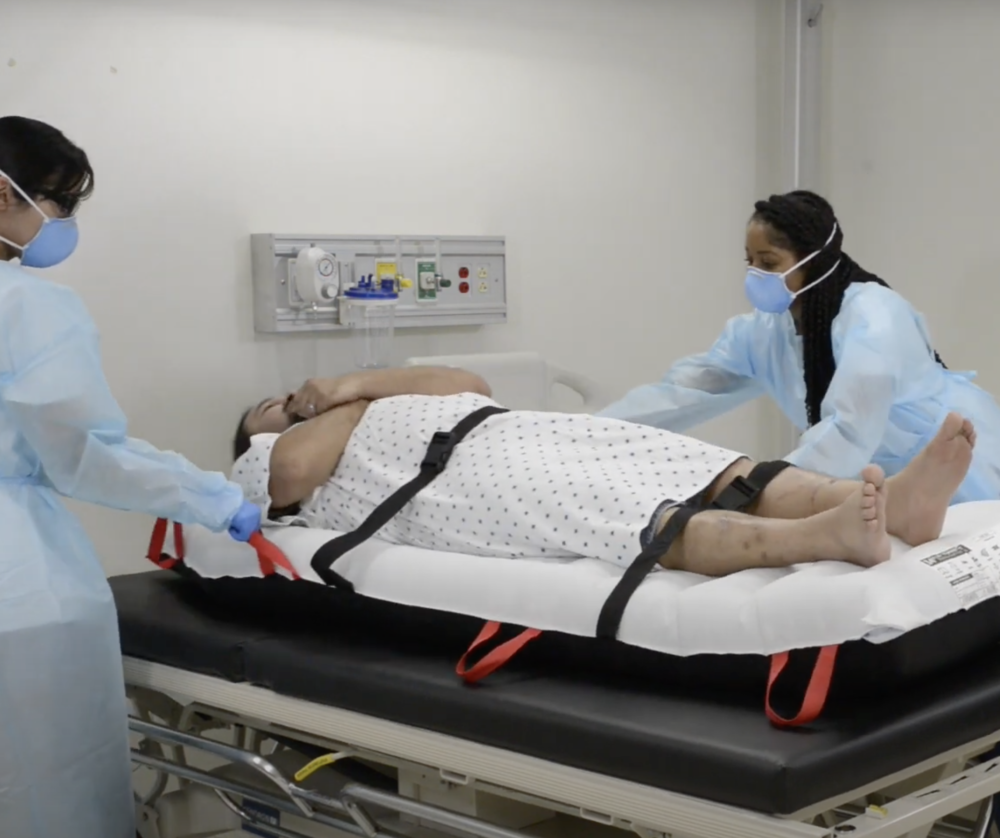The Association of periOperative Registered Nurses (AORN) has been at the forefront in advocating for safe patient handling practices. They have developed comprehensive guidelines to minimize the risk of muscle fatigue and potential musculoskeletal injuries in healthcare professionals. Central to these recommendations is the use of advancements such as air assisted lateral transfer devices.
The Role of Air Assisted Lateral Transfer Devices
Air assisted lateral transfer devices are revolutionizing patient handling in Operating Rooms (ORs). These devices significantly reduce the physical strain on OR staff during patient transfers, a common task that has been traditionally associated with high injury rates.
Single-patient use air assisted devices offer several benefits. They help in the safe lateral positioning of patients during procedures, such as total hip surgeries. These devices are considered transfer devices and are used to move patients on and off of the OR table. Risk of injury to OR staff is major concern with the volume of surgical cases and predictable lateral transfers that occur. Along with the increasing morbid obesity in the general population, the surgery department is also seeing this increase in average patient weight. Additionally, single patient use air transfer mats enhance infection control, an essential consideration in the OR setting. In many cases, the SPU air transfer Mat can be placed on the table prior to surgery and then conveniently inflated post surgery to transfer the patient off the table.
AORN Algorithms: The Key to Safe Patient Handling and Lateral Transfers
As a globally recognized authority in perioperative nursing, the Association of periOperative Registered Nurses (AORN) plays a pivotal role in ensuring safe and effective patient handling. Their meticulously designed algorithms provide healthcare professionals with a roadmap for assessing and planning patient handling tasks, thus minimizing workplace injuries and errors.
AORN Algorithms: A Deep Dive
At the heart of the AORN’s Safe Patient Handling and Movement Guidelines is a comprehensive algorithm that guides healthcare professionals through a step-by-step process. This algorithm begins with an initial patient evaluation to determine their mobility status and any specific handling requirements.
The algorithm then moves on to outline the appropriate manual handling techniques or mechanical lift devices required based on the patient’s condition. This structured approach ensures that each patient receives personalized care tailored to their specific needs, while also safeguarding the health and safety of healthcare professionals.
One of the critical recommendations in the AORN algorithm is the use of Air Assisted Lateral Transfer Systems when dealing with patients who are unable to assist and weigh more than 157lbs. The adoption of these systems can dramatically reduce the risk of injury to both patients and healthcare professionals, contributing to safer and more efficient patient handling.
Embracing Air Assisted Lateral Transfer Systems
Air Assisted Lateral Transfer Systems are not just about safety; they are also about cost-effectiveness. By reducing the risk of musculoskeletal injuries among healthcare professionals, these systems can help healthcare facilities avoid costly worker compensation claims and maintain a healthy, productive workforce.
Moreover, these systems improve patient comfort during transfers, leading to better patient experiences and potentially higher patient satisfaction scores. It’s a win-win situation for all involved!
Success Stories
The implementation of the AORN’s Safe Patient Handling and Movement Guidelines, along with the use of Air Assisted Lateral Transfer Systems, has already yielded impressive results in numerous healthcare facilities. For instance, a study conducted at the Tampa Veterans Affairs Hospital demonstrated a significant reduction in patient handling injuries following the adoption of these guidelines.
Prioritizing Patient Safety
In conclusion, the AORN’s Safe Patient Handling and Movement Guidelines provide an invaluable resource for healthcare professionals dedicated to improving patient safety and reducing workplace injuries. As we continue to strive for excellence in patient care, let’s ensure that these guidelines and recommended technologies become an integral part of our everyday practice.
Why Staying Up-to-Date Matters
In the rapidly evolving field of healthcare, staying up-to-date with the latest tools and devices is not just an advantage, it’s a necessity. It ensures that healthcare professionals can provide the highest quality of care while protecting their own health and safety.
The AORN guidelines provide a roadmap for integrating these innovative devices into practice. By following these guidelines, healthcare professionals can reduce the risk of injury, improve patient safety, and enhance overall surgical outcomes.
Looking Ahead
As we move forward, let’s continue to embrace these advancements. The AORN’s Safe Patient Handling recommendations, coupled with the use of innovative devices like air assisted lateral transfer systems, offer a promising pathway towards safer and more efficient patient care practices. By prioritizing both patient and provider safety, we can create a healthier and more productive healthcare environment for all.












